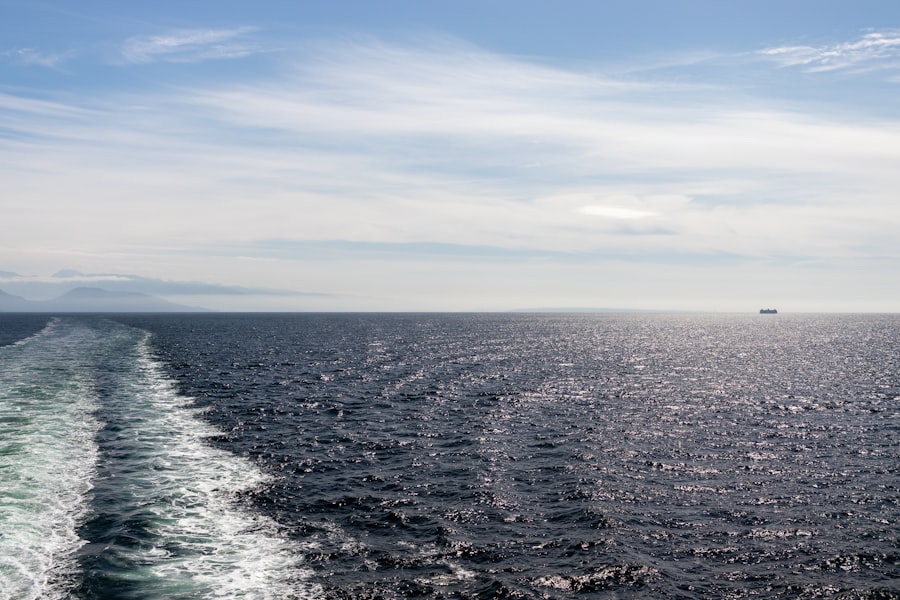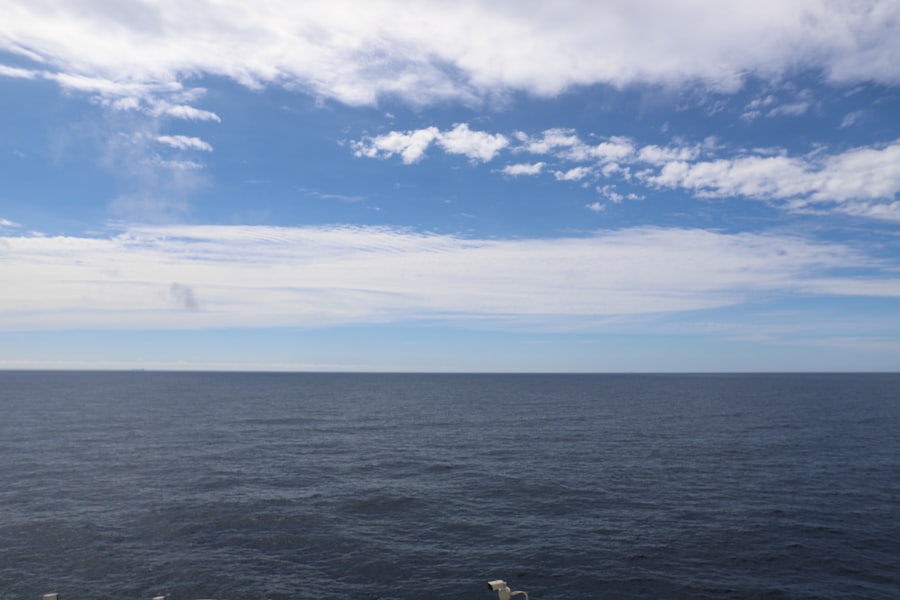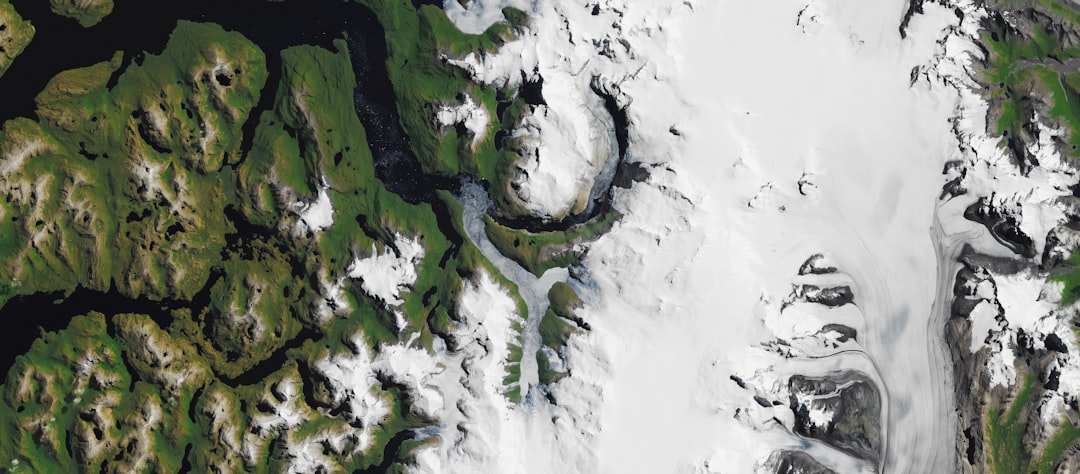The world’s oceans are vast and varied, each with its own unique characteristics and challenges. Among these, the Drake Passage and the North Sea stand out as two significant maritime regions, each with a rich history and distinct environmental features. The Drake Passage, located at the southern tip of South America, serves as a critical conduit between the Atlantic and Pacific Oceans, while the North Sea, nestled between the British Isles and mainland Europe, has long been a hub of trade and exploration.
This article delves into the geographic, climatic, ecological, and historical aspects of these two bodies of water, highlighting their importance and the challenges they present to navigators and explorers alike. As one embarks on a comparative journey through these two seas, it becomes evident that both the Drake Passage and the North Sea have played pivotal roles in shaping maritime navigation and exploration. The Drake Passage is notorious for its treacherous waters and unpredictable weather, making it a formidable challenge for even the most seasoned sailors.
In contrast, the North Sea has been a vital artery for commerce and communication throughout history, facilitating trade routes that have connected nations and cultures. By examining their geographic locations, climatic conditions, marine ecosystems, and historical significance, one can appreciate the complexities and wonders of these two remarkable maritime regions.
Key Takeaways
- The Drake Passage is a treacherous body of water located between South America’s Cape Horn and the South Shetland Islands of Antarctica, while the North Sea is a shallow sea located between the United Kingdom, Norway, Denmark, Germany, the Netherlands, Belgium, and France.
- The Drake Passage is known for its strong winds, large waves, and unpredictable weather, making it one of the most challenging maritime routes in the world, while the North Sea experiences a temperate maritime climate with relatively calm weather conditions.
- The Drake Passage is home to diverse marine life, including penguins, seals, and whales, and is an important area for scientific research, while the North Sea supports a variety of fish species, seabirds, and marine mammals, and is a significant fishing ground for European countries.
- The Drake Passage has a rich history of exploration, with famous expeditions by Sir Francis Drake and Captain James Cook, while the North Sea has been a crucial area for trade, fishing, and naval battles throughout history.
- Navigating the Drake Passage poses significant challenges and dangers due to its strong currents, icebergs, and extreme weather conditions, while the North Sea presents risks such as shallow waters, strong tides, and potential oil and gas infrastructure.
Geographic Location and Characteristics of the Drake Passage
The Drake Passage is situated between Cape Horn at the southern tip of South America and Antarctica. This narrow stretch of water is approximately 600 kilometers (370 miles) wide and serves as a critical junction for ocean currents, particularly the Antarctic Circumpolar Current. The passage is known for its deep waters, which can reach depths of over 4,000 meters (13,123 feet), making it one of the deepest oceanic regions in the world.
The convergence of cold Antarctic waters with warmer currents from the north creates a dynamic marine environment that is both rich in biodiversity and notoriously volatile. The geographical features surrounding the Drake Passage contribute to its reputation as one of the most challenging maritime routes. The rugged terrain of the Andes mountains to the west and the icy expanse of Antarctica to the south create a unique topography that influences weather patterns in the region.
The passage is often characterized by strong winds and turbulent seas, which can change rapidly, posing significant risks to vessels traversing its waters. Despite these challenges, the Drake Passage remains a vital route for scientific research expeditions to Antarctica and for vessels seeking to navigate between the Atlantic and Pacific Oceans.
Geographic Location and Characteristics of the North Sea

In contrast to the remote and tumultuous waters of the Drake Passage, the North Sea is located in northwestern Europe, bordered by several countries including the United Kingdom, Norway, Denmark, Germany, Belgium, and the Netherlands. This semi-enclosed sea covers an area of approximately 570,000 square kilometers (220,000 square miles) and has an average depth of around 95 meters (312 feet). The North Sea is characterized by its relatively shallow waters compared to other major seas, which allows for extensive fishing grounds and rich marine biodiversity.
The North Sea’s geographic location has made it a crucial area for maritime trade throughout history. Its proximity to major European ports has facilitated commerce and cultural exchange for centuries. The sea is also home to numerous islands and archipelagos, such as the Shetland Islands and Orkney Islands, which add to its complexity.
The interplay between land and sea in this region has shaped not only its physical characteristics but also its economic significance as a hub for shipping routes and energy production.
Climate and Weather Conditions in the Drake Passage
| Month | Average Temperature (°C) | Wind Speed (km/h) | Precipitation (mm) |
|---|---|---|---|
| January | 5 | 35 | 80 |
| February | 5 | 35 | 90 |
| March | 4 | 35 | 100 |
| April | 2 | 35 | 110 |
| May | 0 | 35 | 120 |
| June | -2 | 35 | 130 |
| July | -3 | 35 | 140 |
| August | -2 | 35 | 130 |
| September | 0 | 35 | 120 |
| October | 2 | 35 | 110 |
| November | 3 | 35 | 90 |
| December | 4 | 35 | 80 |
The climate in the Drake Passage is heavily influenced by its proximity to Antarctica and the surrounding oceanic currents. The region experiences extreme weather conditions that can change rapidly within a matter of hours. The passage is known for its fierce storms, high winds, and large waves, which can pose significant challenges for navigation.
Average wind speeds can reach up to 40 knots (46 miles per hour), with gusts often exceeding this threshold during storms. Temperatures in the Drake Passage vary significantly depending on the season. In summer months, temperatures can hover around 5°C (41°F), while winter temperatures can plummet to below freezing.
The combination of cold air masses from Antarctica colliding with warmer air from the north creates a volatile atmosphere that can lead to sudden squalls and rough seas. This unpredictable climate has earned the Drake Passage its reputation as one of the most dangerous maritime routes in the world.
Climate and Weather Conditions in the North Sea
The North Sea experiences a temperate maritime climate characterized by mild winters and cool summers. The average temperature ranges from about 3°C (37°F) in winter to around 15°C (59°F) in summer. However, like many coastal regions, weather conditions can be highly variable due to changing atmospheric pressures and ocean currents.
Storms are not uncommon in this area, particularly during autumn and winter months when low-pressure systems frequently sweep across the sea. Rainfall is relatively evenly distributed throughout the year in the North Sea region, contributing to its lush coastal landscapes. The presence of prevailing westerly winds brings moist air from the Atlantic Ocean, resulting in cloudy skies and frequent precipitation.
These weather patterns have significant implications for maritime activities such as fishing, shipping, and oil exploration. Navigators must remain vigilant as sudden changes in weather can impact visibility and sea conditions.
Marine Life and Ecosystems in the Drake Passage

The Drake Passage is home to a diverse array of marine life that thrives in its cold waters. The nutrient-rich environment supports a variety of species, including krill, which serves as a crucial food source for larger animals such as whales, seals, and seabirds. The passage is particularly famous for its populations of humpback whales, orcas, and blue whales that migrate through these waters during feeding seasons.
In addition to larger marine mammals, the Drake Passage hosts an impressive array of seabirds that rely on its rich marine ecosystems for sustenance. Species such as albatrosses, petrels, and penguins are commonly observed in this region. The unique combination of cold water upwellings and nutrient influxes creates an environment that supports complex food webs and diverse habitats.
This ecological richness makes the Drake Passage an important area for scientific research focused on understanding climate change impacts on marine ecosystems.
Marine Life and Ecosystems in the North Sea
The North Sea boasts a rich marine ecosystem that supports a wide variety of species due to its relatively shallow waters and nutrient availability. It is known for its productive fishing grounds that provide essential resources for local economies. Fish species such as cod, haddock, herring, and mackerel thrive in these waters, making it one of Europe’s most important fishing areas.
In addition to commercially important fish species, the North Sea is home to various marine mammals including seals and porpoises. The presence of diverse habitats such as sandbanks, estuaries, and rocky shores contributes to its ecological diversity. Seabirds are also abundant in this region; species like puffins and guillemots nest along coastal cliffs while others forage over open waters.
However, human activities such as overfishing and pollution pose significant threats to these ecosystems, prompting ongoing conservation efforts aimed at preserving marine biodiversity.
Historical Significance and Exploration of the Drake Passage
The historical significance of the Drake Passage cannot be overstated; it has been a critical route for explorers since the Age of Discovery. Sir Francis Drake himself was one of the first Europeans to navigate these treacherous waters during his circumnavigation of the globe in the late 16th century. His journey not only demonstrated the passage’s navigational challenges but also opened up new opportunities for trade and exploration between Europe and Asia.
Throughout history, many expeditions have sought to traverse the Drake Passage in search of new lands or scientific knowledge about Antarctica. The passage has served as a gateway for researchers studying climate change impacts on polar regions as well as those investigating unique marine ecosystems found nowhere else on Earth. Today, it remains an essential route for scientific research vessels heading to Antarctica, underscoring its enduring importance in maritime exploration.
Historical Significance and Exploration of the North Sea
The North Sea has played a pivotal role in European history as a vital trade route since ancient times. Its strategic location facilitated commerce among various civilizations including the Romans, Vikings, and later European powers during their colonial expansions. The sea was instrumental in shaping trade networks that connected northern Europe with Mediterranean markets.
Naval battles during both World Wars highlighted its strategic importance as nations vied for control over shipping lanes and resources. Today, remnants of this rich history can be found along its coasts—historic ports like Amsterdam or Hamburg serve as testaments to centuries of maritime activity that have shaped not only regional economies but also cultural exchanges across borders.
Challenges and Dangers of Navigating the Drake Passage
Navigating through the Drake Passage presents numerous challenges due to its unpredictable weather patterns and rough seas. Sailors must contend with strong currents that can create dangerous conditions for vessels attempting to cross this narrow stretch of water. The convergence of cold Antarctic waters with warmer currents often leads to sudden storms characterized by high winds and towering waves that can reach heights of over 15 meters (49 feet).
Moreover, icebergs pose an additional threat during certain times of year when they drift into shipping lanes from nearby glaciers or ice shelves. These floating masses can be difficult to detect until it is too late—making vigilance essential for any vessel traversing these perilous waters. Despite advancements in navigation technology, many mariners still regard crossing through this passage as one of their most daunting challenges.
Challenges and Dangers of Navigating the North Sea
While navigating through the North Sea may not present quite as extreme conditions as those found in the Drake Passage, it still poses significant challenges due to its busy shipping lanes and unpredictable weather patterns. The presence of numerous oil rigs adds complexity to navigation; vessels must remain vigilant while maneuvering around these structures amidst heavy maritime traffic. Foggy conditions are common in this region—particularly during autumn months—reducing visibility significantly for sailors attempting to navigate through busy shipping routes or near coastal areas where fishing vessels operate frequently.
Additionally, strong tidal currents can create hazardous situations for smaller boats or inexperienced sailors who may struggle against powerful forces at play beneath their hulls.
While they present distinct challenges for navigation due to their respective climates and ecosystems—each remains vital arteries connecting nations across oceans while offering insights into our planet’s complex marine environments.
The Drake Passage and the North Sea are two significant maritime regions that play crucial roles in global oceanography and climate. The Drake Passage, located between the southern tip of South America and Antarctica, is known for its turbulent waters and is a key conduit for the Antarctic Circumpolar Current. In contrast, the North Sea, bordered by several European countries, is renowned for its rich marine biodiversity and significant oil and gas reserves. For those interested in exploring more about these fascinating bodies of water, a related article can be found on MyGeoQuest. This article delves into the unique characteristics and environmental significance of these regions. You can read more about it by visiting this page.
WATCH NOW! Drake Passage: Earth’s Deadliest Waters Revealed
FAQs
What is the Drake Passage?
The Drake Passage is a body of water located between the southern tip of South America and the northern tip of the Antarctic Peninsula. It connects the southwestern part of the Atlantic Ocean with the southeastern part of the Pacific Ocean.
What is the North Sea?
The North Sea is a marginal sea of the Atlantic Ocean located between Great Britain, Scandinavia, Germany, the Netherlands, Belgium, and France. It is known for its rich biodiversity and is an important area for fishing, shipping, and oil and gas production.
How do the Drake Passage and the North Sea differ in terms of location?
The Drake Passage is located in the Southern Hemisphere, between South America and Antarctica, while the North Sea is located in the Northern Hemisphere, between Great Britain, Scandinavia, and mainland Europe.
What are the differences in climate and weather between the Drake Passage and the North Sea?
The Drake Passage is known for its notoriously rough and stormy seas, with strong winds and high waves due to its location in the Southern Ocean. In contrast, the North Sea experiences a more temperate climate with milder weather, although it can also be prone to storms and rough seas, especially during the winter months.
How do the Drake Passage and the North Sea differ in terms of marine life?
The Drake Passage is home to a diverse range of marine life, including whales, seals, and seabirds, as well as unique species adapted to the cold Antarctic waters. The North Sea is also rich in marine biodiversity, with a variety of fish, seabirds, and marine mammals, as well as important breeding grounds for seals and seabirds.
What are the main economic activities associated with the Drake Passage and the North Sea?
The Drake Passage is primarily used for scientific research and tourism, with limited commercial activities due to its remote location and harsh weather conditions. In contrast, the North Sea is a major hub for fishing, shipping, and offshore oil and gas production, contributing significantly to the economies of the surrounding countries.
